Overall expenditures and prices of product Topic




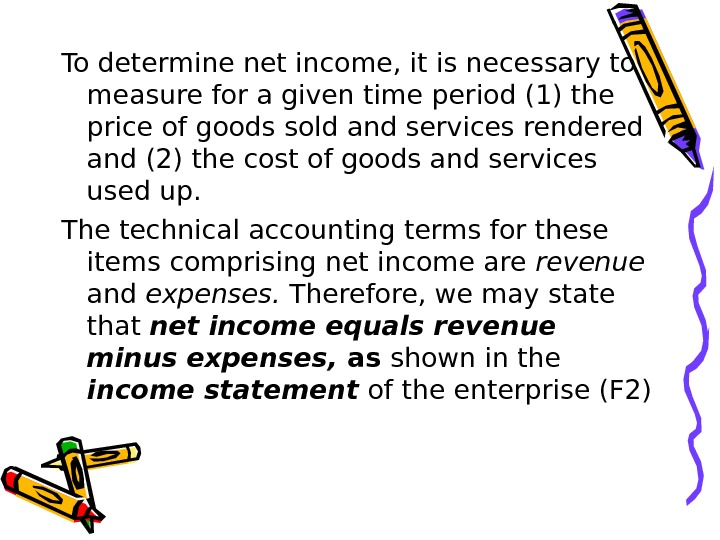
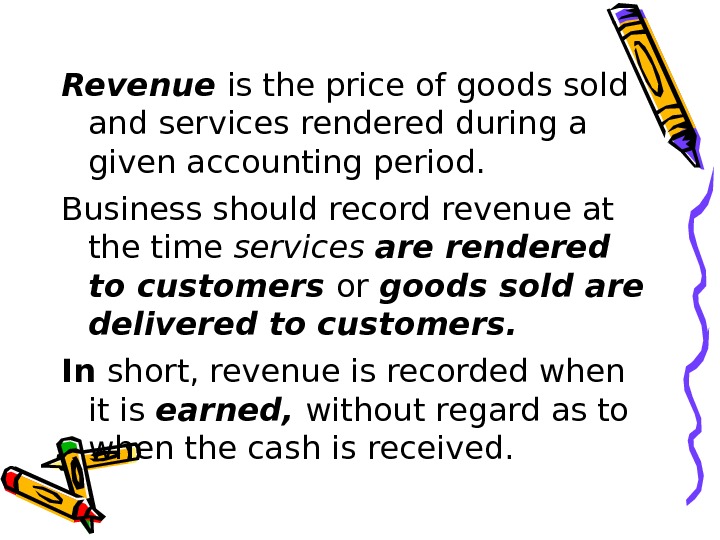
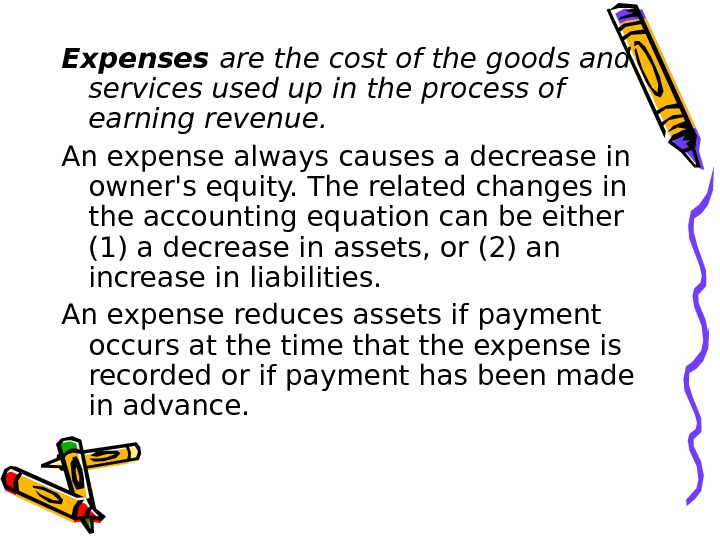


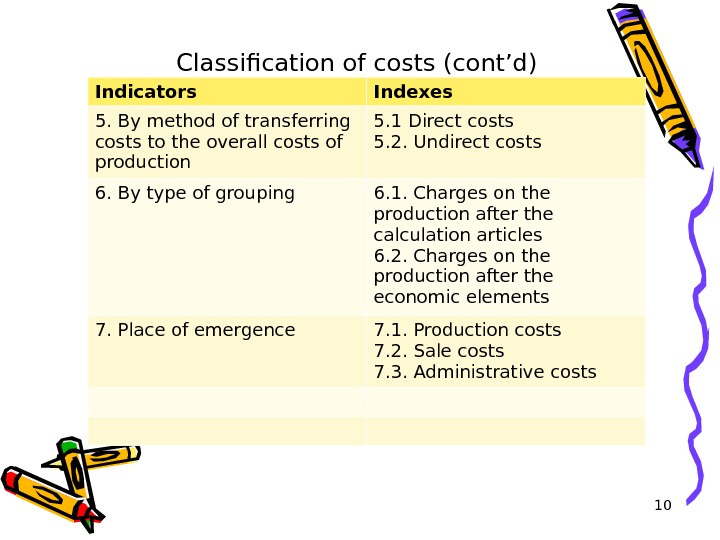
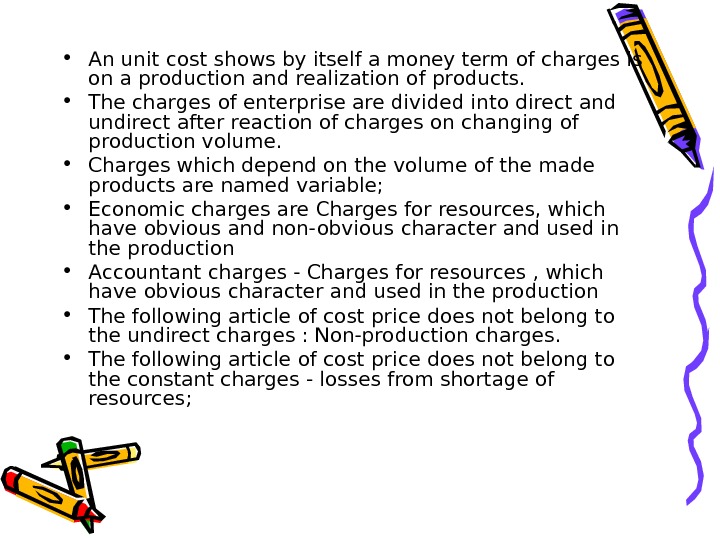







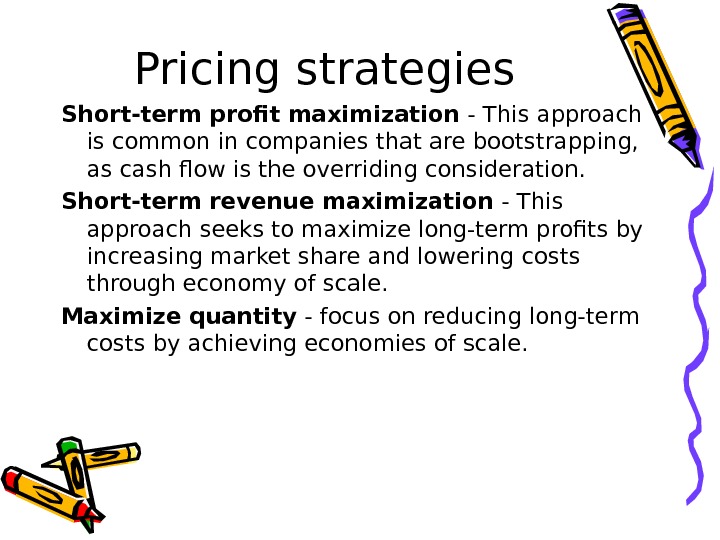

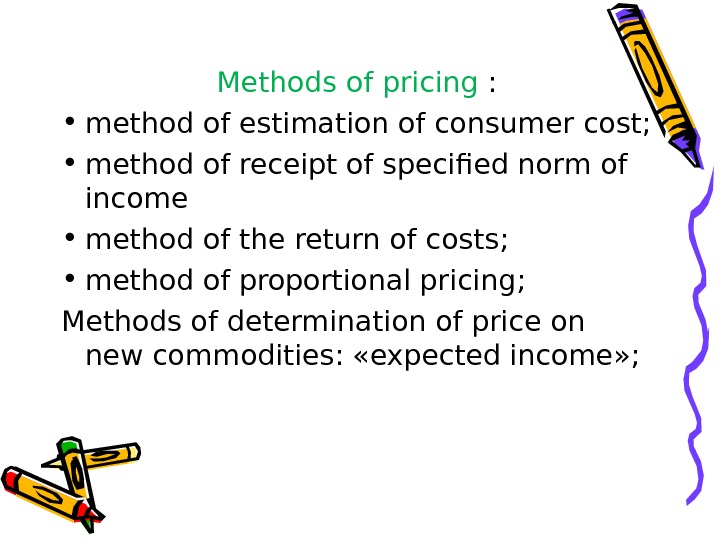
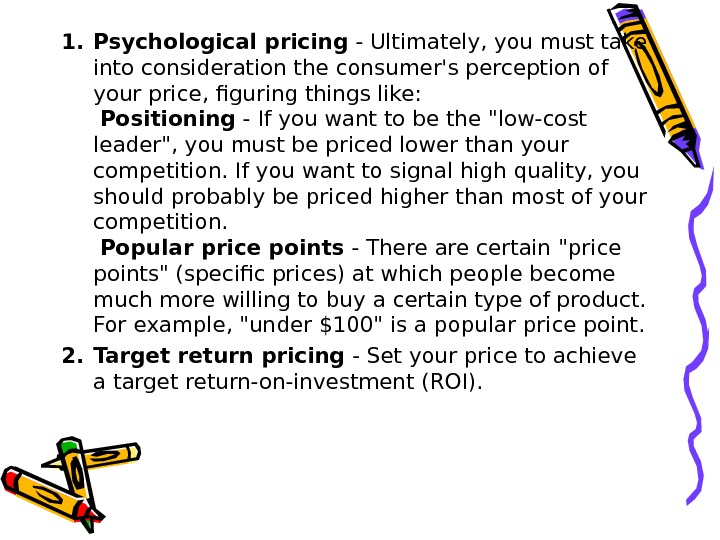
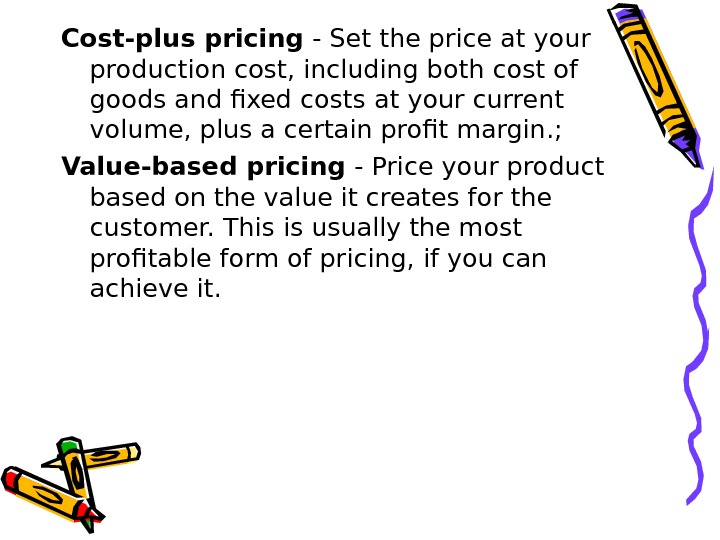
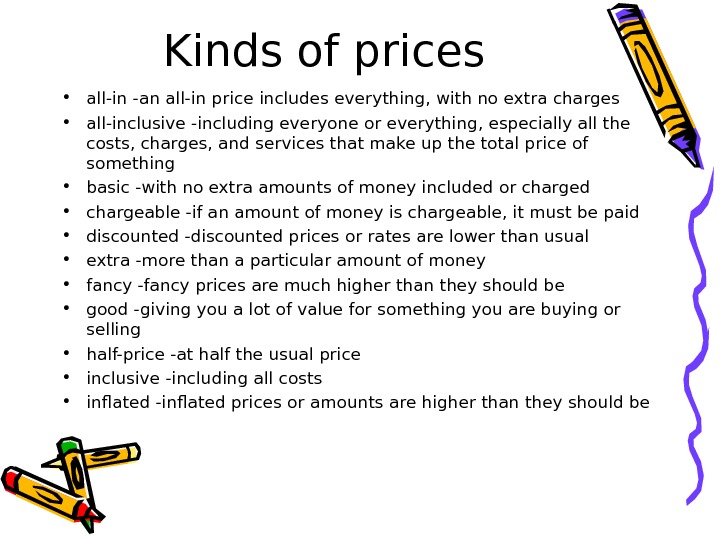

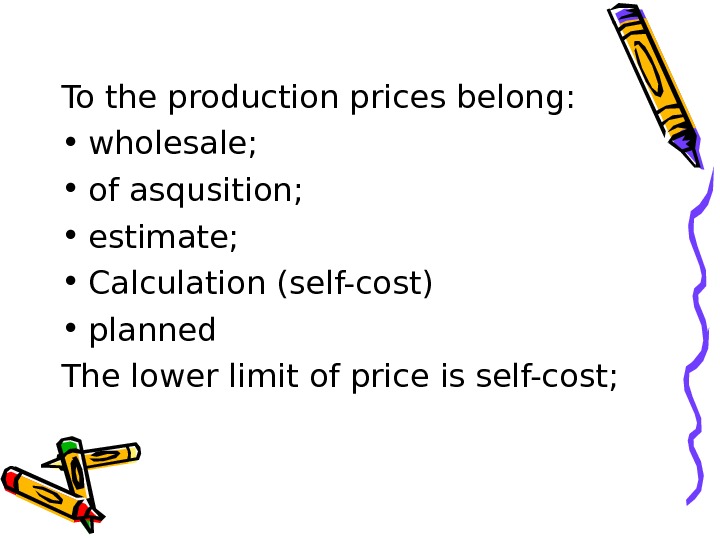

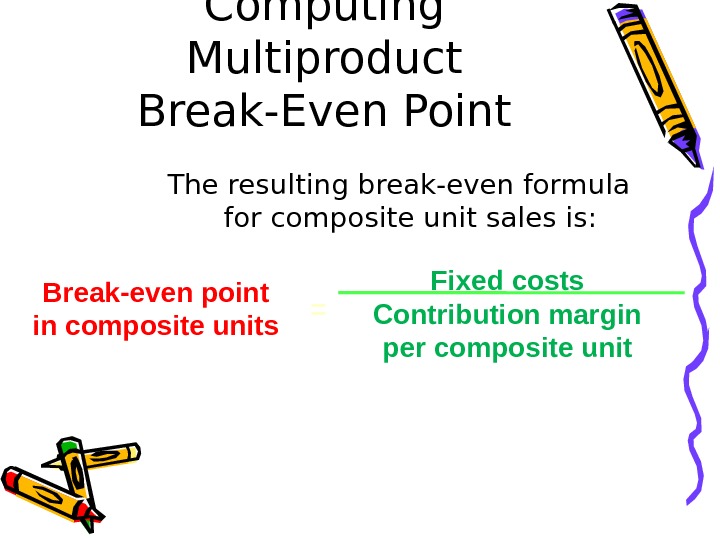
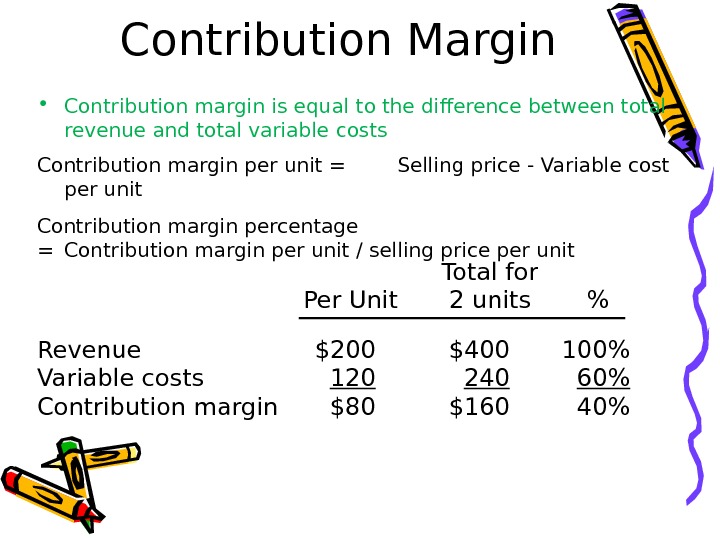
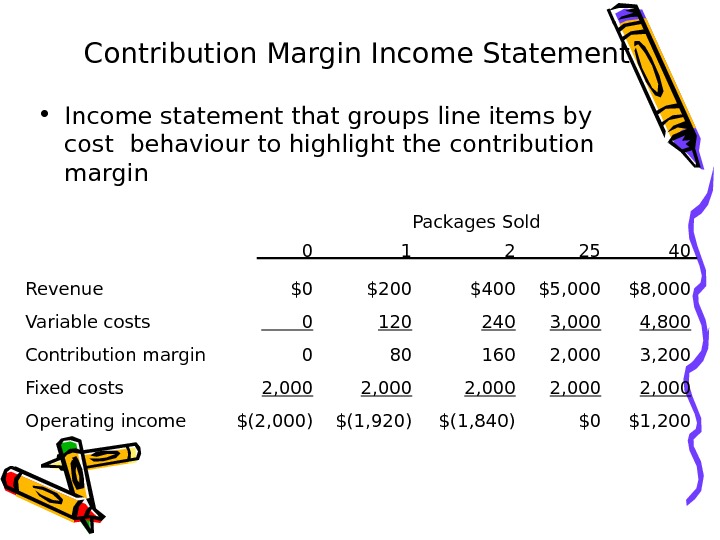

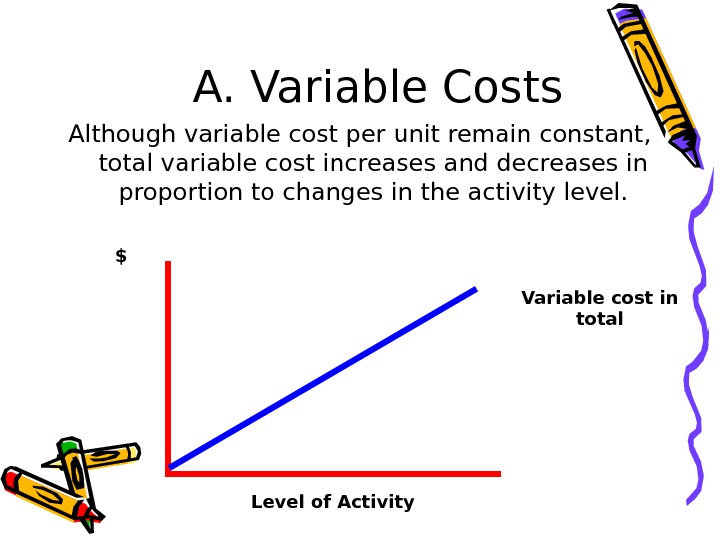
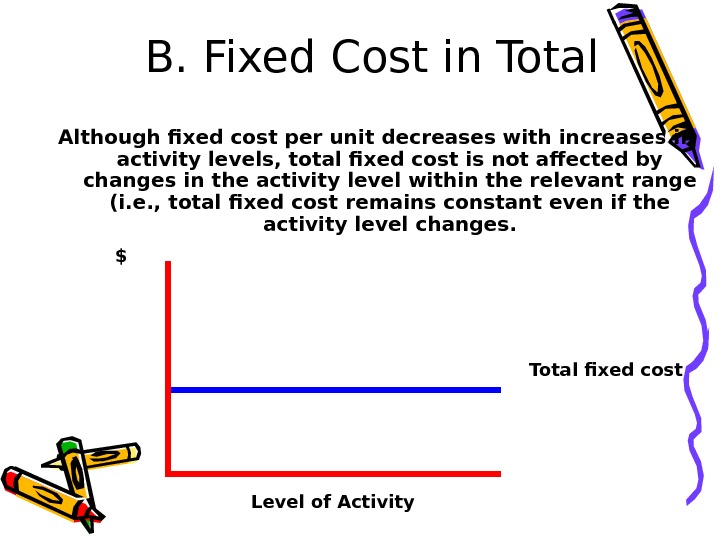
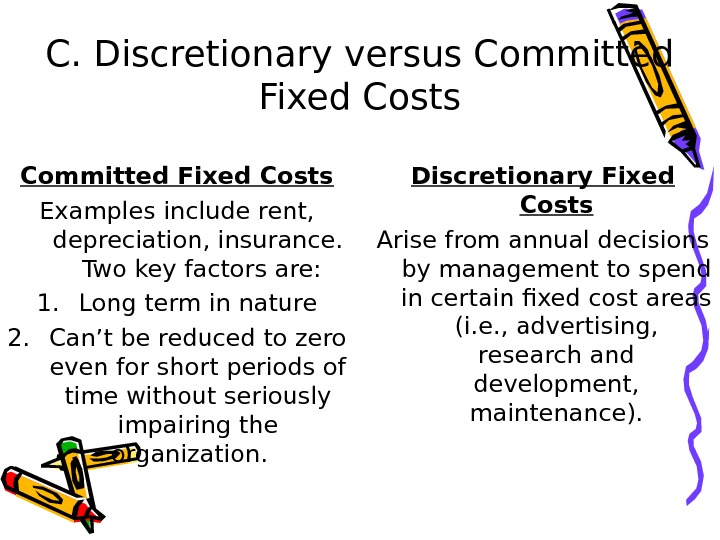
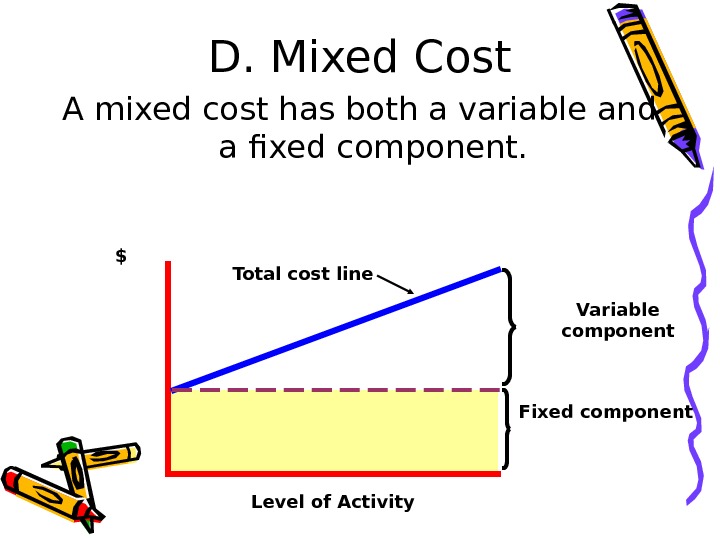


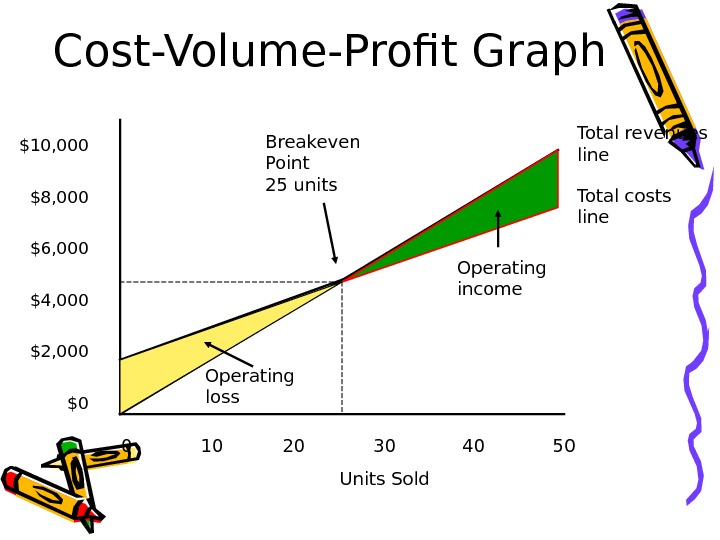
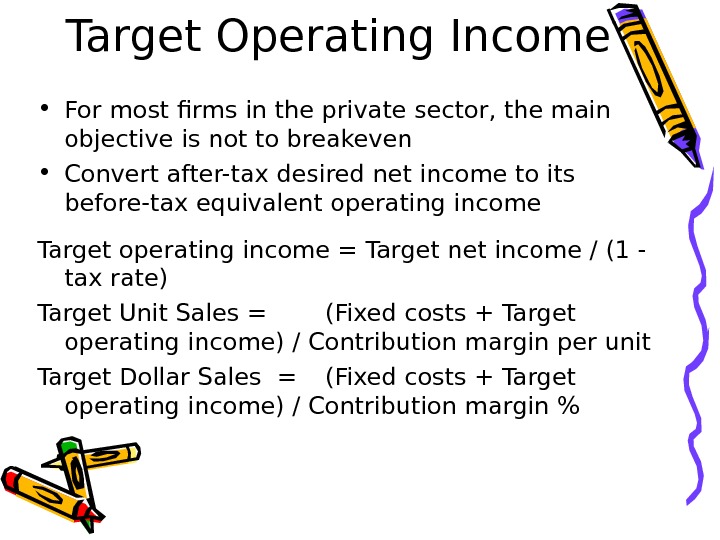

overall_expenditures_and_prices_of_product.ppt
- Размер: 679.5 Кб
- Количество слайдов: 40
Описание презентации Overall expenditures and prices of product Topic по слайдам
 Overall expenditures and prices of product Topic
Overall expenditures and prices of product Topic
 Plan of lection 1. Definition of income and cost 2. Classification of costs 3. Price and its functions 4. Pricing methods 5. Cost-volume-profit analysis
Plan of lection 1. Definition of income and cost 2. Classification of costs 3. Price and its functions 4. Pricing methods 5. Cost-volume-profit analysis
 1 The earning of net income, or profits, is a major goal of almost every business enterprise, large or small. Profit is the increase in the owner’s equity resulting from operation of the business. The opposite of profit, a decrease in owner’s equity resulting from operation of the business, is termed a net loss.
1 The earning of net income, or profits, is a major goal of almost every business enterprise, large or small. Profit is the increase in the owner’s equity resulting from operation of the business. The opposite of profit, a decrease in owner’s equity resulting from operation of the business, is termed a net loss.
 Since business managers and economists use the word profits in somewhat different senses, accountants prefer to use the alternative term net income, and to define this term very carefully. Net income is the excess of the price of goods sold and services rendered over the cost of goods and services used up during a given time period. At this point, we shall adopt the technical accounting term net income in preference to the less precise term profits, however they are the same.
Since business managers and economists use the word profits in somewhat different senses, accountants prefer to use the alternative term net income, and to define this term very carefully. Net income is the excess of the price of goods sold and services rendered over the cost of goods and services used up during a given time period. At this point, we shall adopt the technical accounting term net income in preference to the less precise term profits, however they are the same.
 To determine net income, it is necessary to measure for a given time period (1) the price of goods sold and services rendered and (2) the cost of goods and services used up. The technical accounting terms for these items comprising net income are revenue and expenses. Therefore, we may state that net income equals revenue minus expenses, as shown in the income statement of the enterprise (F 2)
To determine net income, it is necessary to measure for a given time period (1) the price of goods sold and services rendered and (2) the cost of goods and services used up. The technical accounting terms for these items comprising net income are revenue and expenses. Therefore, we may state that net income equals revenue minus expenses, as shown in the income statement of the enterprise (F 2)
 Revenue is the price of goods sold and services rendered during a given accounting period. Business should record revenue at the time services are rendered to customers or goods sold are delivered to customers. In short, revenue is recorded when it is earned, without regard as to when the cash is received.
Revenue is the price of goods sold and services rendered during a given accounting period. Business should record revenue at the time services are rendered to customers or goods sold are delivered to customers. In short, revenue is recorded when it is earned, without regard as to when the cash is received.
 Expenses are the cost of the goods and services used up in the process of earning revenue. An expense always causes a decrease in owner’s equity. The related changes in the accounting equation can be either (1) a decrease in assets, or (2) an increase in liabilities. An expense reduces assets if payment occurs at the time that the expense is recorded or if payment has been made in advance.
Expenses are the cost of the goods and services used up in the process of earning revenue. An expense always causes a decrease in owner’s equity. The related changes in the accounting equation can be either (1) a decrease in assets, or (2) an increase in liabilities. An expense reduces assets if payment occurs at the time that the expense is recorded or if payment has been made in advance.
 Cost – • Variable costs A variable cost increases and decreases directly and propor tionately with changes in volume. • Fixed costs Costs which remain unchanged despite changes in volume are called fixed or nonvariable. • Semivariable (or mixed) costs Semivariable costs are also called mixed costs because part of the cost is fixed and part is variable. As a result, semivariable costs change in response to a change in volume, but they change by less than a proportionate amount.
Cost – • Variable costs A variable cost increases and decreases directly and propor tionately with changes in volume. • Fixed costs Costs which remain unchanged despite changes in volume are called fixed or nonvariable. • Semivariable (or mixed) costs Semivariable costs are also called mixed costs because part of the cost is fixed and part is variable. As a result, semivariable costs change in response to a change in volume, but they change by less than a proportionate amount.
 Classification of costs 9 Classification feature Division 1. By methods of calculation 1. 1. Economical costs 1. 2. Accountant costs 2. By reaction to the changes in volume of production 2. 1. Variable costs 2. 2. Fixed costs 2. 3. Semi variable costs 3. By division 3. 1. Costs per unit 3. 2. Costs per production program (total volume) 4. By type of expenditures 4. 1. Cost of raw material and materials; 4. 2. Expenses on wages of basic production workers; 4. 3. Cost of exploitation and retaining of equipment; 4. 4. Deterioration of the instrument. 4. 5. Etc
Classification of costs 9 Classification feature Division 1. By methods of calculation 1. 1. Economical costs 1. 2. Accountant costs 2. By reaction to the changes in volume of production 2. 1. Variable costs 2. 2. Fixed costs 2. 3. Semi variable costs 3. By division 3. 1. Costs per unit 3. 2. Costs per production program (total volume) 4. By type of expenditures 4. 1. Cost of raw material and materials; 4. 2. Expenses on wages of basic production workers; 4. 3. Cost of exploitation and retaining of equipment; 4. 4. Deterioration of the instrument. 4. 5. Etc
 10 Classification of costs (cont’d) Indicators Indexes 5. By method of transferring costs to the overall costs of production 5. 1 Direct costs 5. 2. Undirect costs 6. By type of grouping 6. 1. Charges on the production after the calculation articles 6. 2. Charges on the production after the economic elements 7. Place of emergence 7. 1. Production costs 7. 2. Sale costs 7. 3. Administrative costs
10 Classification of costs (cont’d) Indicators Indexes 5. By method of transferring costs to the overall costs of production 5. 1 Direct costs 5. 2. Undirect costs 6. By type of grouping 6. 1. Charges on the production after the calculation articles 6. 2. Charges on the production after the economic elements 7. Place of emergence 7. 1. Production costs 7. 2. Sale costs 7. 3. Administrative costs
 • An unit cost shows by itself a money term of charges is on a production and realization of products. • The charges of enterprise are divided into direct and undirect after reaction of charges on changing of production volume. • Charges which depend on the volume of the made products are named variable; • Economic charges are Charges for resources, which have obvious and non-obvious character and used in the production • Accountant charges — Charges for resources , which have obvious character and used in the production • The following article of cost price does not belong to the undirect charges : Non-production charges. • The following article of cost price does not belong to the constant charges — losses from shortage of resources;
• An unit cost shows by itself a money term of charges is on a production and realization of products. • The charges of enterprise are divided into direct and undirect after reaction of charges on changing of production volume. • Charges which depend on the volume of the made products are named variable; • Economic charges are Charges for resources, which have obvious and non-obvious character and used in the production • Accountant charges — Charges for resources , which have obvious character and used in the production • The following article of cost price does not belong to the undirect charges : Non-production charges. • The following article of cost price does not belong to the constant charges — losses from shortage of resources;
 • The index of marginal charges is used to the analysis of need of changing the production volume; • The charges of production on an enterprise consist of wages, depreciation, cost of materials, overhead costs; • The purpose of grouping of charges after the calculation articles is determination of cost price of one unit • To the industrial unit cost belong money form of expense of enterprise on the production and selling of products; • On the production volume do not depend constant charges; • Classification of charges on the production after the economic elements of charges is the basis for calculation of expenses on materials;
• The index of marginal charges is used to the analysis of need of changing the production volume; • The charges of production on an enterprise consist of wages, depreciation, cost of materials, overhead costs; • The purpose of grouping of charges after the calculation articles is determination of cost price of one unit • To the industrial unit cost belong money form of expense of enterprise on the production and selling of products; • On the production volume do not depend constant charges; • Classification of charges on the production after the economic elements of charges is the basis for calculation of expenses on materials;
 3 Price – it is money expression of cost of commodity Functions of price : Signalling function Transmission of preferences Stimulating function
3 Price – it is money expression of cost of commodity Functions of price : Signalling function Transmission of preferences Stimulating function
 Signaling function • Prices perform a signaling function – they adjust to demonstrate where resources are required, and where they are not • Prices rise and fall to reflect scarcities and surpluses • If prices are rising because of high demand from consumers, this is a signal to suppliers to expand production to meet the higher demand • If there is excess supply in the market the price mechanism will help to eliminate a surplus of a good by allowing the market price to fall.
Signaling function • Prices perform a signaling function – they adjust to demonstrate where resources are required, and where they are not • Prices rise and fall to reflect scarcities and surpluses • If prices are rising because of high demand from consumers, this is a signal to suppliers to expand production to meet the higher demand • If there is excess supply in the market the price mechanism will help to eliminate a surplus of a good by allowing the market price to fall.
 Transmission of preferences • Through their choices consumers send information to producers about the changing nature of needs and wants • Higher prices act as an incentive to raise output because the supplier stands to make a better profit. • When demand is weaker in a recession then supply contracts as producers cut back on output. One of the features of a market economy system is that decision-making is decentralised i. e. there is no single body responsible for deciding what is to be produced and in what quantities.
Transmission of preferences • Through their choices consumers send information to producers about the changing nature of needs and wants • Higher prices act as an incentive to raise output because the supplier stands to make a better profit. • When demand is weaker in a recession then supply contracts as producers cut back on output. One of the features of a market economy system is that decision-making is decentralised i. e. there is no single body responsible for deciding what is to be produced and in what quantities.
 Stimulative function of price — rational use of the limited resources. , instrumental in scientific and technical progress, update of assortment • Prices serve to ration scarce resources when demand in a market outstrips supply. • When there is a shortage , the price is bid up – leaving only those with the willingness and ability to pay to purchase the product. • The popularity of auctions as a means of allocating resources is worth considering as a means of allocating resources and clearing a market.
Stimulative function of price — rational use of the limited resources. , instrumental in scientific and technical progress, update of assortment • Prices serve to ration scarce resources when demand in a market outstrips supply. • When there is a shortage , the price is bid up – leaving only those with the willingness and ability to pay to purchase the product. • The popularity of auctions as a means of allocating resources is worth considering as a means of allocating resources and clearing a market.
 Pricing – it is the process of establishment and putting of prices and tariffs, later their revision and determination of standard of prices, their correlation and structure
Pricing – it is the process of establishment and putting of prices and tariffs, later their revision and determination of standard of prices, their correlation and structure
 Factors, which influence on price making process: Positioning — How are you positioning your product in the market? Demand Curve — How will your pricing affect demand Cost — Calculate the fixed and variable costs associated with your product or service Environmental factors — Are there any legal or other constraints on pricing?
Factors, which influence on price making process: Positioning — How are you positioning your product in the market? Demand Curve — How will your pricing affect demand Cost — Calculate the fixed and variable costs associated with your product or service Environmental factors — Are there any legal or other constraints on pricing?
 Pricing strategies Short-term profit maximization — This approach is common in companies that are bootstrapping, as cash flow is the overriding consideration. Short-term revenue maximization — This approach seeks to maximize long-term profits by increasing market share and lowering costs through economy of scale. Maximize quantity — focus on reducing long-term costs by achieving economies of scale.
Pricing strategies Short-term profit maximization — This approach is common in companies that are bootstrapping, as cash flow is the overriding consideration. Short-term revenue maximization — This approach seeks to maximize long-term profits by increasing market share and lowering costs through economy of scale. Maximize quantity — focus on reducing long-term costs by achieving economies of scale.
 • Maximize profit margin — This strategy is most appropriate when the number of sales is either expected to be very low or sporadic and unpredictable. • Differentiation — At one extreme, being the low-cost leader is a form of differentiation from the competition. • Survival — In certain situations, such as a price war, market decline or market saturation, you must temporarily set a price that will cover only costs and allow you to continue operations.
• Maximize profit margin — This strategy is most appropriate when the number of sales is either expected to be very low or sporadic and unpredictable. • Differentiation — At one extreme, being the low-cost leader is a form of differentiation from the competition. • Survival — In certain situations, such as a price war, market decline or market saturation, you must temporarily set a price that will cover only costs and allow you to continue operations.
 Methods of pricing : • method of estimation of consumer cost; • method of receipt of specified norm of income • method of the return of costs; • method of proportional pricing; Methods of determination of price on new commodities: «expected income» ;
Methods of pricing : • method of estimation of consumer cost; • method of receipt of specified norm of income • method of the return of costs; • method of proportional pricing; Methods of determination of price on new commodities: «expected income» ;
 1. Psychological pricing — Ultimately, you must take into consideration the consumer’s perception of your price, figuring things like: Positioning — If you want to be the «low-cost leader», you must be priced lower than your competition. If you want to signal high quality, you should probably be priced higher than most of your competition. Popular price points — There are certain «price points» (specific prices) at which people become much more willing to buy a certain type of product. For example, «under $100» is a popular price point. 2. Target return pricing — Set your price to achieve a target return-on-investment (ROI).
1. Psychological pricing — Ultimately, you must take into consideration the consumer’s perception of your price, figuring things like: Positioning — If you want to be the «low-cost leader», you must be priced lower than your competition. If you want to signal high quality, you should probably be priced higher than most of your competition. Popular price points — There are certain «price points» (specific prices) at which people become much more willing to buy a certain type of product. For example, «under $100» is a popular price point. 2. Target return pricing — Set your price to achieve a target return-on-investment (ROI).
 Cost-plus pricing — Set the price at your production cost, including both cost of goods and fixed costs at your current volume, plus a certain profit margin. ; Value-based pricing — Price your product based on the value it creates for the customer. This is usually the most profitable form of pricing, if you can achieve it.
Cost-plus pricing — Set the price at your production cost, including both cost of goods and fixed costs at your current volume, plus a certain profit margin. ; Value-based pricing — Price your product based on the value it creates for the customer. This is usually the most profitable form of pricing, if you can achieve it.
 Kinds of prices • all-in -an all-in price includes everything, with no extra charges • all-inclusive -including everyone or everything, especially all the costs, charges, and services that make up the total price of something • basic -with no extra amounts of money included or charged • chargeable -if an amount of money is chargeable, it must be paid • discounted -discounted prices or rates are lower than usual • extra -more than a particular amount of money • fancy -fancy prices are much higher than they should be • good -giving you a lot of value for something you are buying or selling • half-price -at half the usual price • inclusive -including all costs • inflated -inflated prices or amounts are higher than they should be
Kinds of prices • all-in -an all-in price includes everything, with no extra charges • all-inclusive -including everyone or everything, especially all the costs, charges, and services that make up the total price of something • basic -with no extra amounts of money included or charged • chargeable -if an amount of money is chargeable, it must be paid • discounted -discounted prices or rates are lower than usual • extra -more than a particular amount of money • fancy -fancy prices are much higher than they should be • good -giving you a lot of value for something you are buying or selling • half-price -at half the usual price • inclusive -including all costs • inflated -inflated prices or amounts are higher than they should be
 • introductory -an introductory offer or price is a low price that is intended to encourage people to buy a new product • non-refundable -if something that you buy is non-refundable, the money that you paid for it cannot be given back to you • premium-premium prices are higher than usual • reasonable -a reasonable price is fair and not too high • steep -steep prices are very high • upfront -upfront costs or payments are paid before you get the goods or services that you are buying • worth -if you say how much something is worth, you state its value in money
• introductory -an introductory offer or price is a low price that is intended to encourage people to buy a new product • non-refundable -if something that you buy is non-refundable, the money that you paid for it cannot be given back to you • premium-premium prices are higher than usual • reasonable -a reasonable price is fair and not too high • steep -steep prices are very high • upfront -upfront costs or payments are paid before you get the goods or services that you are buying • worth -if you say how much something is worth, you state its value in money
 To the production prices belong: • wholesale; • of asqusition; • estimate; • Calculation (self-cost) • planned The lower limit of price is self-cost;
To the production prices belong: • wholesale; • of asqusition; • estimate; • Calculation (self-cost) • planned The lower limit of price is self-cost;
 Cost-Volume-Profit Analysis • Examines the behaviour of total revenues, total costs, and operating income as changes occur in the output level, selling price, variable costs or fixed costs Assumptions of CVP Analysis 1. revenues change in relation to production and sales 2. costs can be divided in variable and fixed categories 3. revenues and costs behave in a linear fashion 4. costs and prices are known 5. if more than one product exists, the sales mix is constant 6. we can ignore the time value of money
Cost-Volume-Profit Analysis • Examines the behaviour of total revenues, total costs, and operating income as changes occur in the output level, selling price, variable costs or fixed costs Assumptions of CVP Analysis 1. revenues change in relation to production and sales 2. costs can be divided in variable and fixed categories 3. revenues and costs behave in a linear fashion 4. costs and prices are known 5. if more than one product exists, the sales mix is constant 6. we can ignore the time value of money
 The resulting break-even formula for composite unit sales is: Break-even point in composite units Fixed costs Contribution margin per composite unit=Computing Multiproduct Break-Even Point
The resulting break-even formula for composite unit sales is: Break-even point in composite units Fixed costs Contribution margin per composite unit=Computing Multiproduct Break-Even Point
 Contribution Margin • Contribution margin is equal to the difference between total revenue and total variable costs Contribution margin per unit = Selling price — Variable cost per unit Contribution margin percentage = Contribution margin per unit / selling price per unit Revenue $200 $400 100% Variable costs 120 240 60% Contribution margin $80 $160 40%Total for Per Unit 2 units %
Contribution Margin • Contribution margin is equal to the difference between total revenue and total variable costs Contribution margin per unit = Selling price — Variable cost per unit Contribution margin percentage = Contribution margin per unit / selling price per unit Revenue $200 $400 100% Variable costs 120 240 60% Contribution margin $80 $160 40%Total for Per Unit 2 units %
 Contribution Margin Income Statement Packages Sold 0 1 2 25 40 Revenue $0 $200 $400 $5, 000 $8, 000 Variable costs 0 120 240 3, 000 4, 800 Contribution margin 0 80 160 2, 000 3, 200 Fixed costs 2, 000 2, 000 Operating income $(2, 000) $(1, 920) $(1, 840) $0 $1, 200 • Income statement that groups line items by cost behaviour to highlight the contribution margin
Contribution Margin Income Statement Packages Sold 0 1 2 25 40 Revenue $0 $200 $400 $5, 000 $8, 000 Variable costs 0 120 240 3, 000 4, 800 Contribution margin 0 80 160 2, 000 3, 200 Fixed costs 2, 000 2, 000 Operating income $(2, 000) $(1, 920) $(1, 840) $0 $1, 200 • Income statement that groups line items by cost behaviour to highlight the contribution margin
 I. Common Cost Behavior Patterns A. Variable Costs B. Fixed Costs C. Discretionary versus Committed Fixed Costs D. Mixed Costs E. Step Costs
I. Common Cost Behavior Patterns A. Variable Costs B. Fixed Costs C. Discretionary versus Committed Fixed Costs D. Mixed Costs E. Step Costs
 A. Variable Costs Although variable cost per unit remain constant, total variable cost increases and decreases in proportion to changes in the activity level. $ Level of Activity Variable cost in total
A. Variable Costs Although variable cost per unit remain constant, total variable cost increases and decreases in proportion to changes in the activity level. $ Level of Activity Variable cost in total
 B. Fixed Cost in Total Although fixed cost per unit decreases with increases in activity levels, total fixed cost is not affected by changes in the activity level within the relevant range (i. e. , total fixed cost remains constant even if the activity level changes. $ Level of Activity Total fixed cost
B. Fixed Cost in Total Although fixed cost per unit decreases with increases in activity levels, total fixed cost is not affected by changes in the activity level within the relevant range (i. e. , total fixed cost remains constant even if the activity level changes. $ Level of Activity Total fixed cost
 C. Discretionary versus Committed Fixed Costs Examples include rent, depreciation, insurance. Two key factors are: 1. Long term in nature 2. Can’t be reduced to zero even for short periods of time without seriously impairing the organization. Discretionary Fixed Costs Arise from annual decisions by management to spend in certain fixed cost areas (i. e. , advertising, research and development, maintenance).
C. Discretionary versus Committed Fixed Costs Examples include rent, depreciation, insurance. Two key factors are: 1. Long term in nature 2. Can’t be reduced to zero even for short periods of time without seriously impairing the organization. Discretionary Fixed Costs Arise from annual decisions by management to spend in certain fixed cost areas (i. e. , advertising, research and development, maintenance).
 D. Mixed Cost A mixed cost has both a variable and a fixed component. $ Level of Activity Fixed component Variable component. Total cost line
D. Mixed Cost A mixed cost has both a variable and a fixed component. $ Level of Activity Fixed component Variable component. Total cost line
 E. Step Costs Step costs are those costs that are fixed for a range of volume but increase to a higher level when the upper bound of the range is exceeded. At that point the costs again remain fixed until another upper bound is exceeded. $ Level of Activity
E. Step Costs Step costs are those costs that are fixed for a range of volume but increase to a higher level when the upper bound of the range is exceeded. At that point the costs again remain fixed until another upper bound is exceeded. $ Level of Activity
 Breakeven Point • Quantity of output where total revenues equal total costs • Point where operating income equals zero Breakeven point in units = Fixed costs / Contribution margin per unit = $2, 000 / $80 = 25 units Breakeven point in dollars = Fixed costs / contribution margin % = $2, 000 / 40% = $5,
Breakeven Point • Quantity of output where total revenues equal total costs • Point where operating income equals zero Breakeven point in units = Fixed costs / Contribution margin per unit = $2, 000 / $80 = 25 units Breakeven point in dollars = Fixed costs / contribution margin % = $2, 000 / 40% = $5,
 Cost-Volume-Profit Graph $10, 000 $8, 000 $6, 000 $4, 000 $2, 000 $0 0 10 20 30 40 50 Units Sold Total revenues line. Breakeven Point 25 units Operating income Operating loss Total costs line
Cost-Volume-Profit Graph $10, 000 $8, 000 $6, 000 $4, 000 $2, 000 $0 0 10 20 30 40 50 Units Sold Total revenues line. Breakeven Point 25 units Operating income Operating loss Total costs line
 Target Operating Income • For most firms in the private sector, the main objective is not to breakeven • Convert after-tax desired net income to its before-tax equivalent operating income Target operating income = Target net income / (1 — tax rate) Target Unit Sales = (Fixed costs + Target operating income) / Contribution margin per unit Target Dollar Sales = (Fixed costs + Target operating income) / Contribution margin %
Target Operating Income • For most firms in the private sector, the main objective is not to breakeven • Convert after-tax desired net income to its before-tax equivalent operating income Target operating income = Target net income / (1 — tax rate) Target Unit Sales = (Fixed costs + Target operating income) / Contribution margin per unit Target Dollar Sales = (Fixed costs + Target operating income) / Contribution margin %
 Thank you for your attention!
Thank you for your attention!
